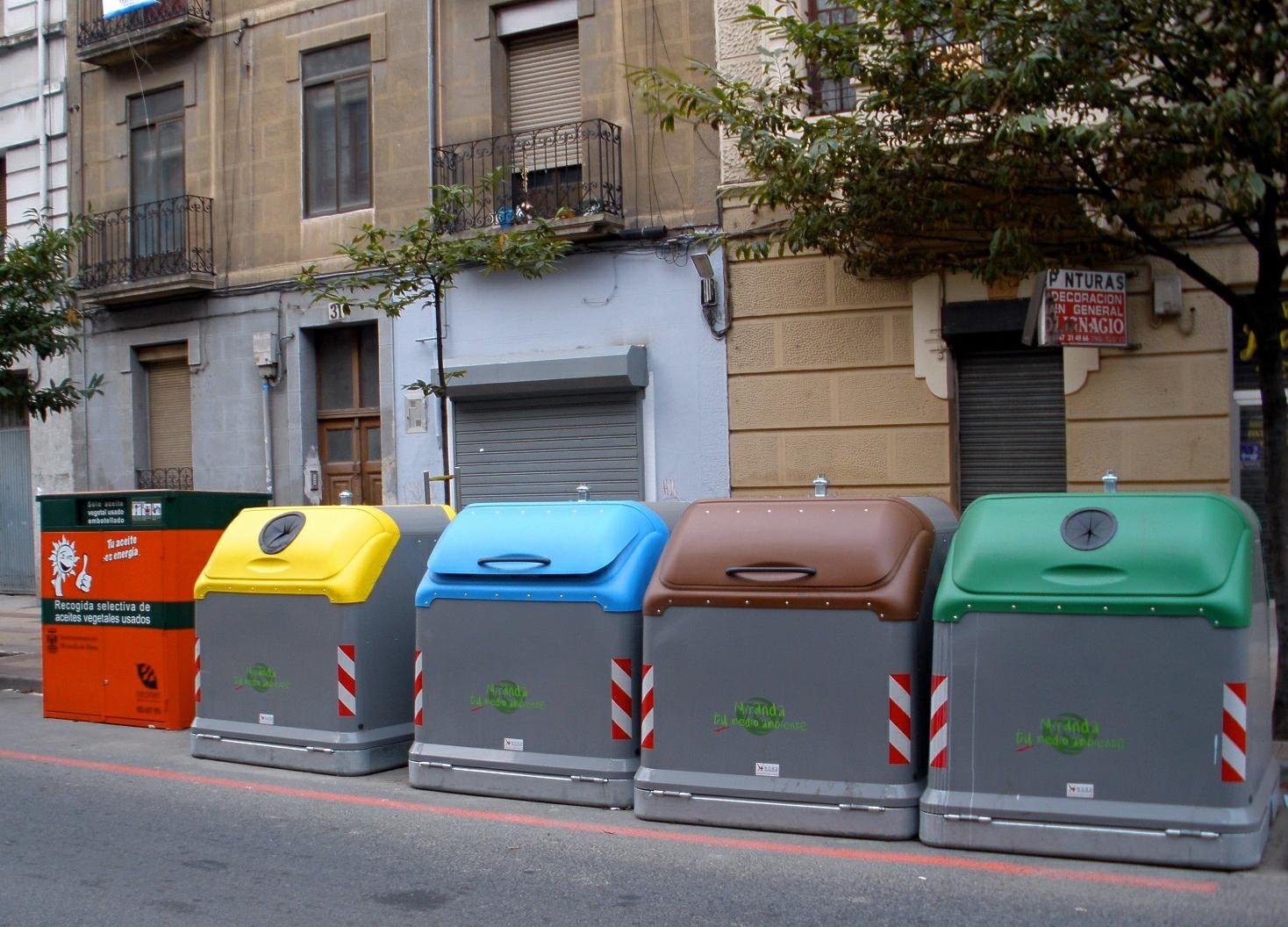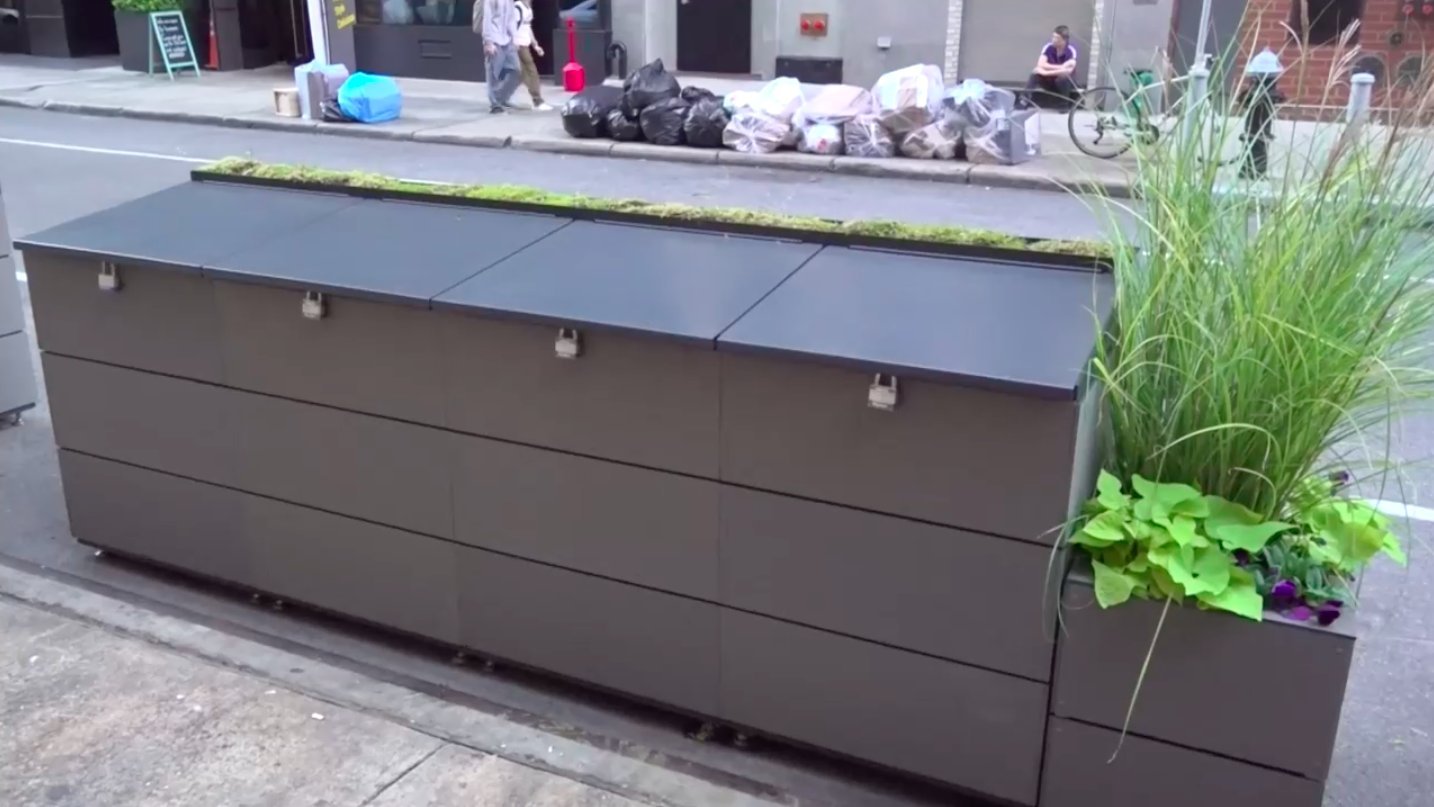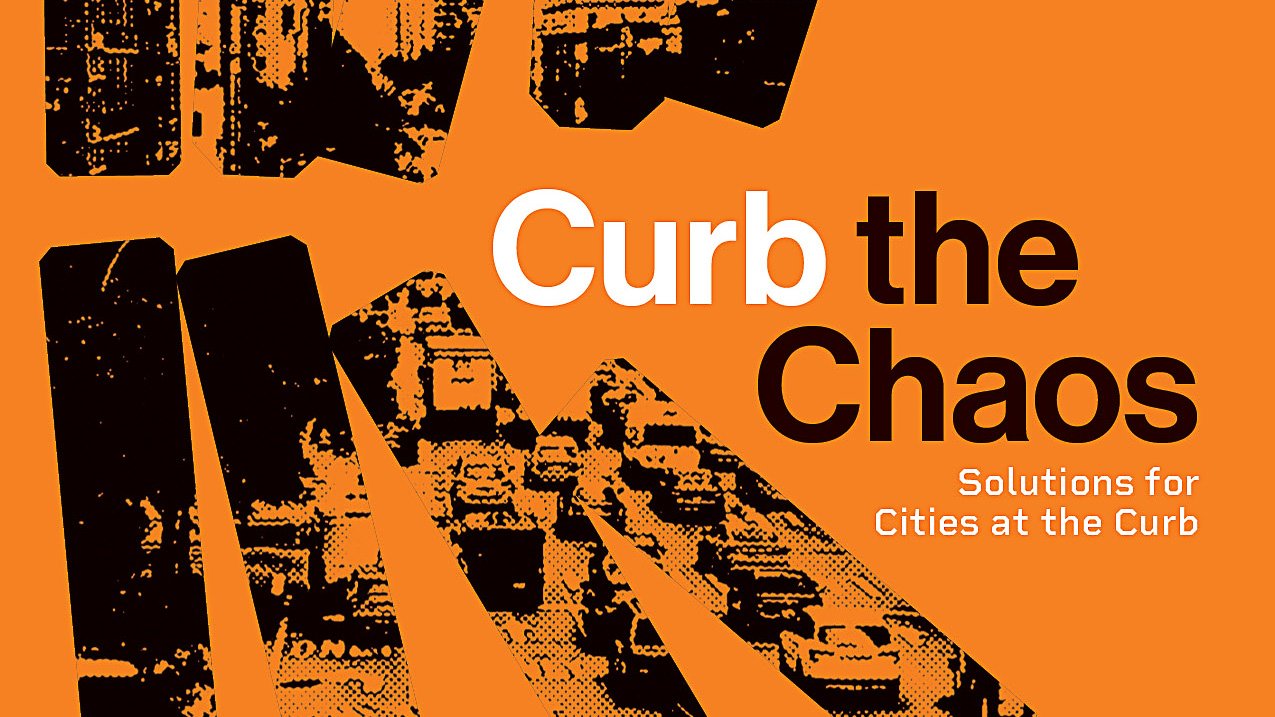New DSNY trash rules must place containers in the curb lane
Last week, DSNY held a public hearing for a new rule that would require food-related businesses to put their curbside trash in rigid, closeable containers. New York City has become infamous for the mounds of black trash bags that sit on sidewalks, leaking, obstructing pedestrians and yes, attracting vermin; DSNY has made the issue a high priority in recent years. But the containerization rule as it’s currently written ignores the biggest source of containerization potential – the curb lane. Cities across the globe who have successfully implemented containerization place those containers off the sidewalk. But in New York City, our deeply entrenched deference to car drivers makes that space all but invisible for reform. If DSNY wants to truly transform sanitation services for food-based businesses, they must take advantage of New York’s ripe and underutilized curb lane.
Curbside containerized trash in Barcelona
Free curbside parking and the culture of entitlement creates conflicts with virtually every other potential use of the curb – sanitation included. Containerized trash, in any location, would undoubtedly keep rats at bay. But that only addresses half the city’s trash problem. Rigid containers on the sidewalk take up the same amount of scant sidewalk space as bags do now. Meanwhile, miles and miles of valuable curb space — an estimated 94% of it — is being used solely to store private vehicles. As a city, we should be prioritizing pedestrians. Replacing trash bags on the sidewalk with containers on the sidewalk just replaces one pedestrian problem with another.
In our report Curb the Chaos: Solutions for Cities at the Curb, we examine the ways cities can better utilize their curb lane for things like sanitation, mobility lanes, package delivery, food delivery, public space, and more. Sanitation is a key area that can benefit from reform, and the use of the curb lane. Most obviously, placing trash bags or containers off the sidewalk frees up all-too-scarce pedestrian space. But doing so can help sanitation operations, too. Curb lane trash allows for more efficient and easier collection. In many cities, this process is automated by the trucks themselves. Whether its automated or manual, curbside containers save sanitation workers from having to weave in and out of densely parked cars. Even without implementing containerization, placing bags in the curb lane is a simple reform that still frees up sidewalk space and eases the labor of collection routes. The Meatpacking District is a leader here – the district’s BID has installed curbside trash corrals that repurpose a small percentage of parking spots for off-sidewalk trash collection. The result is a cleaner looking neighborhood and an easier collection route. Speaking of a clean-looking neighborhood, requiring restaurants to store containers beside their business throughout the day, before moving them to the edge of the sidewalk for collection, is not a good look. Many restaurants work hard to create inviting storefronts — containers out front would potentially block windows and other pleasing elements that help attract customers.
Containerized trash, part of the DSNY pilot, on 15th Street near Union Square
DSNY has implemented containerized, curb lane trash in small pilots throughout the city in a partnership with Citibin. Proponents of the program say that the pilot made sidewalks clearer and decreased the rat population. But in March of this year, DSNY announced that they determined the pilot was not scalable to the rest of the city. The “mountains of trash” that New Yorkers generate, in the words of Commissioner Jessica Tisch, are largely the problem. Residents were generating more trash than the containers could hold, and bags were ending up sitting outside the containers. But, as Streetsblog pointed out, those bags were at least in the curb lane and not blocking pedestrians’ paths. (In the Curb the Chaos report, we note that more frequent pick-ups could help mitigate that issue.) The collection process also proved challenging in the pilot – unlocking and locking each container actually slowed down sanitation workers, nearly doubling the time it took them to finish one block. Using containers that can be lifted by trucks, without requiring anyone to exit the truck and manually empty the containers, would fix that problem. But there are massive resource, fleet, and labor implications to a change like that.
A holistic containerization program will not be simple or quick. But if we hope to make incremental steps toward modernization, we must rethink the status quo, starting with widespread free parking at the curb. Implementing containerization on the sidewalk engages with this issue in an isolated way, rather than considering trash as part of a larger question about the best use of our limited public space. By failing to consider the curb as an area ripe for reform, we’re leaving the biggest leaps forward on the table. As a result, New Yorkers, the majority of whom do not own a car, are not able to reap the benefits that our underutilized curb space could offer us.
Browse the Curb the Chaos report to see how cities can boost business, efficiency, health, and happiness through better use of the curb:




